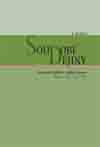Ronald Reagan, George H. W. Bush a revoluce roku 1989. Americké mýty versus primární zdroje
Ronald Reagan, George H. W. Bush, and the Revolutions of 1989: American Myths versus the Primary Sources
Author(s): Thomas S. BlantonSubject(s): History
Published by: AV ČR - Akademie věd České republiky - Ústav pro soudobé dějiny
Summary/Abstract: This essay assesses the increasingly U.S.-centric narratives about the revolutions of 1989 and weighs them against the cumulative record from documentary sources. The emphasis focuses on the Reagan myth since this is the narrative most Americans credit. Proponents of the ‘victory school’ argue that the Soviets shifted to less confrontational policies in the late 1980s because the U.S. military buildup and political offensive in the early 1980s raised the costs of confrontation and forced the Soviets into a corner from which there was no escape save for surrender. Yet, a wide range of documentary and secondary sources undercut that myth. The data from both CIA and Soviet sources show that actual Soviet military spending remained generally fl at from 1977 through 1984, went up slightly in the first year of Gorbachev and then down again. And Reagan himself sought a nuclear disarmament from the early years of his presidency. Another construction with particular salience in the U.S. credits President George H.W. Bush with a leading role in the actual revolutions of 1989. However, the documentary evidence suggests that U.S. policy stayed mostly on the sidelines during the actual events of 1989, either peripheral to the main events, or actually working to prevent the revolutionary change.
Journal: Soudobé Dějiny
- Issue Year: XVIII/2011
- Issue No: 01-02
- Page Range: 120-150
- Page Count: 31
- Language: Czech

